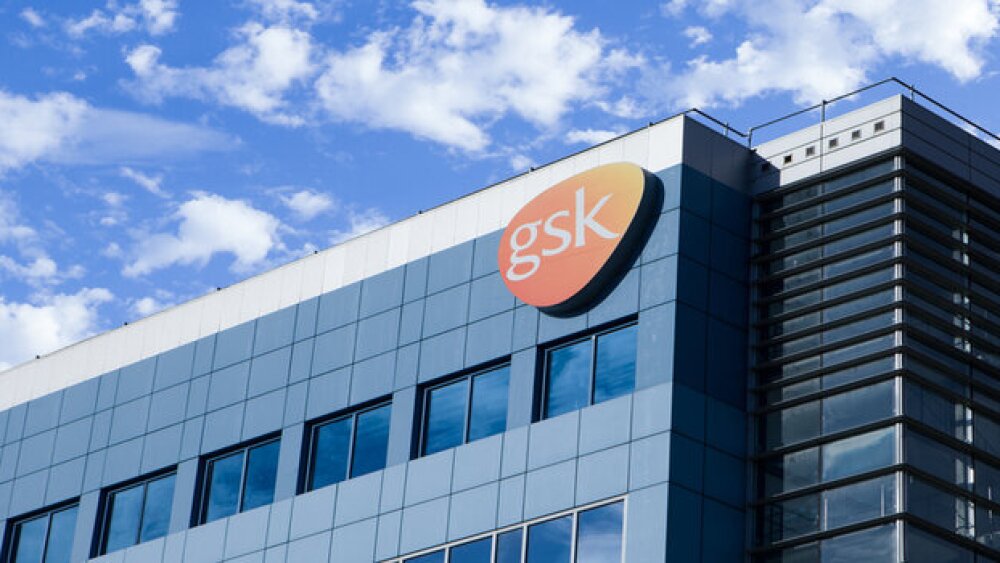Second-quarter earnings come amid many high-level challenges for the biopharma industry. How will these five closely watched biotechs fare?
Johnson & Johnson kicked of biopharma’s Q2 season last week, beating analyst expectations with an unexpectedly positive development for its business, bringing in over $23.7 billion in revenue in the quarter. Likewise, Novartis delivered a strong second-quarter performance, with sales growing 11% year-on-year to exceed $14 billion.
Is this optimistic start to Q2 earnings season a good sign for the broader industry, which in recent months has been battered by bad news? Or will the high-level policy headwinds, clinical setbacks, regulatory roadblocks and even patient deaths set the tone?
Here, BioSpace previews five of the most highly anticipated second-quarter reports, focusing on companies that in recent weeks have been big newsmakers, while also giving space to those that are reliable performers.
All Eyes on Sarepta as Shares Nosedive
Sarepta Therapeutics’ stock has plummeted in recent months, battered by patient deaths, structural shuffling and harsh regulatory headwinds. With these as context, the Massachusetts-based biotech is “top of mind” for analysts heading into the second-quarter earnings season, Jefferies’ Michael Yee said in a virtual event last Thursday. Then, news broke that a third patient who had been treated with one of the company’s AAV-based gene therapies had died.
Going into last week’s first investor call on Wednesday, investors knew of two patient deaths, both of teenaged boys treated with Sarepta’s Duchenne muscular dystrophy therapy Elevidys. On the call, the company announced that it would slap a black box warning on Elevidys, warning patients and prescribers of the risk of acute liver failure. Sarepta also launched a sweeping corporate overhaul involving 500 layoffs and a pipeline pivot away from gene therapies and onto siRNA programs. Investors reacted positively to this move, sending the company’s shares soaring as much as 40% as markets closed that day.
Despite the positive market movement, however, Jefferies analyst Andrew Tsai presciently suggested a more measured assessment of Sarepta. “It’s not like Sarepta’s out of the woods,” he said at the virtual event with Yee. Following the event on Thursday, news of the third patient death surfaced.
Though unrelated to Elevidys—the patient had been treated with an investigational gene therapy for limb girdle muscular dystrophy (LGMD)— the FDA, which on Friday requested that Sarepta voluntarily halt all Elevidys shipments. While the company initially refused, it reversed course a few days later.
The FDA also pulled Sarepta’s approval for the platform therapy on which Elevidys and the LGMD asset are based. Commissioner Marty Makary has also suggested that the agency may completely pull Elevidys from the market.
“We view the FDA’s announcement as the worst-case scenario for the company, as it could negatively affect patient interest in Elevidys and suggests the company’s relationship with the FDA is now fractured,” William Blair analysts wrote in a note to investors Monday.
“We think the LGMD patient death could amplify patient hesitancy to use commercial Elevidys and increase investor distrust since the company did not disclose the event on its call,” William Blair wrote in a note to investors early Friday morning.
Sarepta has not yet announced an exact date for its Q2 call, only revealing that it will occur in “early August 2025.”
Ultragenyx Stuck in Slump After Back-to-Back Hurdles
It’s been a rough month for Ultragenyx. Earlier in July, the California biotech disclosed that it was pushing on to the final analysis of the Phase III Orbit trial, which is testing the Mereo BioPharma-partnered UX143 in osteogenesis imperfecta. Analysts took this to mean that the asset fell short of an efficacy bar that would have otherwise triggered an early study termination. Investors apparently felt the same way, with the biotech’s crashing 21% in the aftermath of the announcement.
In a note on July 15, analysts at Guggenheim Partners wrote that the final analyses of Orbit and Cosmic—another UX143 trial in the same indication—will come by the end of the year, giving Ultragenyx at least 18 months’ worth of follow-up for UX143. The asset, also known as setrusumab, is an investigational monoclonal antibody that works by boosting bone formation and bone mineral density.
“In our view, ORBIT and COSMIC appear to be poorly designed, with management overestimating setrusumab’s effect size,” according to the analysts. “We believe the inability to meaningfully differentiate vs. SoC [standard of care] . . . has [Ultragenyx] stock trading lower.”
Then, just days after the Orbit announcement, Ultragenyx received a complete response letter (CRL) from the FDA, denying approval for its gene therapy UX111 for the rare metabolic disorder Sanfilippo syndrome type A.
The rejection “sounds bad,” Yee conceded during the Jefferies virtual call, “but actually it did not say that that had to do with the actual data” for the gene therapy. Instead, the CRL cited manufacturing issues. “So it did suggest—maybe—that they were going to get approved had the CMC [chemistry, manufacturing and controls] been fine,” Yee contended.
Ultragenyx shares have yet to recover from these back-to-back hurdles. As of writing, the company has dropped 36.5% since the Orbit announcement on July 9.
Ultragenyx’s Q2 earnings call has yet to be formally scheduled. Guggenheim expects Ultragenyx’s Q2 revenue to hit $164 million, in line with the consensus estimate. For the whole year, however, the firm anticipates Ultragenyx to fall under the $660 million consensus.
Multiple Sclerosis, Leqembi on the Mind for Biogen
Dubbed as the “worst-performing large cap” pharma by Jefferies’ Yee, Biogen will face investors and analysts during its Q1 call on July 31, most likely fielding questions and concerns around what has been a rough launch for its biggest newsmaker, the anti-amyloid antibody Leqembi.
In June 2023, Leqembi became the first anti-amyloid Alzheimer’s therapy to win full approval from the FDA. Despite this distinction, however—as well as having more than a year’s headstart versus its closest competitor, Eli Lilly’s Kisunla—Leqembi has struggled to take off.
The partners are anticipating an FDA approval for a subcutaneous maintenance formulation in the third quarter, which Eisai in February suggested could be a tailwind for the product, helping to “reduce the burden on healthcare professionals and patients.” But according to the July 15 Guggenheim note, the subcutaneous approval will be more for patient convenience and not for growth. Instead, growth is expected to come from Leqembi’s subcutaneous formulation for treatment initiation, for which the companies are planning to file regulatory submissions next year.
Biogen and Eisai do “not expect sales inflection this year,” the Guggenheim analysts wrote. Still, the firm anticipates global Leqembi sales to fall between the $110 million and $114 million range for the second quarter, coming “nicely above” the current consensus forecast of $96 million. Indeed, however slowly, sales have been on the rise for Leqembi—though this has been driven largely by overseas markets. U.S. uptake continues to lag.
Analysts at Truist, in contrast, are less optimistic, writing in a July 21 note that “after 7 quarters on the market, we believe it is unlikely that Leqembi’s growth trajectory will start to meaningfully accelerate from where it is.” The subcutaneous formulations of the drug could “moderately accelerate” its uptake, but “overall enthusiasm for the treatment has waned,” they contended.
Trust sees “no visible nearterm upside drivers” for Biogen.
Beyond Leqembi, analysts also have their eyes on Biogen’s multiple sclerosis portfolio, which is currently the biggest contributor to the company’s topline. In the first quarter, multiple sclerosis products made $953 million for Biogen, more than half of its $1.73 billion total product revenue.
Guggenheim expects multiple sclerosis product revenue to hit $933 million in the second quarter excluding royalties from its Roche-partnered Ocrevus. With this revenue prediction, Guggenheim expects Biogen to miss the consensus, which puts its multiple sclerosis sales at $948 million.
Copycat competition contributed heavily to this forecast, according to the July 15 note, which pointed out that in Europe, there are generics to Tecfidera and a biosimilar to Tysabri. Another Tysabri biosimilar is also expected to enter the U.S. market this year, further challenging Biogen’s sales in this space, according to Guggenheim.
BeOne Buoyed by Brukinsa To Become Top Midcap Biotech
Whereas Jefferies rates Biogen as the worst-performing large-cap biotech, Guggenheim in its July 15 note named BeOne—formerly BeiGene—as its top mid-cap biotech player.
Much of BeOne’s performance is carried by the BTK inhibitor Brukinsa, approved for mantle cell lymphoma, marginal zone lymphoma, chronic or small lymphocytic leukemia and Waldenström’s macroglobulinemia. In the first quarter, Brukinsa surged 62% to bring in $792 million, accounting for the bulk of the company’s $1.1 billion product revenue.
Guggenheim expects the drug to continue its strong momentum into the second quarter, forecasting sales of $924 million, ahead of the consensus estimate of $914 million. Citing data from healthcare analytics firm IQVIA, the analysts noted that total Brukinsa prescriptions have grown 33% year-on-year, outpacing other BTK inhibitors, including AstraZeneca’s Calquence (19%) and AbbVie’s Imbruvica (down 9%).
Brukinsa uptake could improve even further with the approval of an oral formulation last month, opening up a “simpler and more convenient” dosing schedule for the drug, Matt Shaulis, BeOne’s North American general manager, said in a statement at the time. The company is also continuing to test Brukinsa in other indications, including B cell malignancies and primary membranous nephropathy.
Aside from Brukinsa, BeOne also owns the anti-PD-1 therapy Tevimbra, though Guggenheim expects a more modest growth rate of 12% for this product and forecasts Q2 sales of $177 million. In the first quarter, Tevimbra sales grew 18% to $171 million.
Despite a bullish assessment from Guggenheim, not all has been perfect for BeOne. In April, for instance, Tevimbra lost against Summit and Akeso’s bispecific antibody ivonescimab, which showed better progression-free survival outcomes in patients with non-small cell lung cancer. BeOne also has no asset targeting both the PD-1 and VEGF pathways, a rapidly emerging approach to cancer that has attracted hefty investments from big industry players including Merck and Pfizer.
BeOne will hold its Q2 call on Aug. 6.
Buzzy New Therapies Bolster Vertex’s Name as Core Business Still Relies on Cystic Fibrosis
Much has been going right for Vertex Pharmaceuticals of late. In December 2023, the FDA approved Casgevy for sickle cell disease, the first-ever CRISPR-based gene therapy to win the regulator’s blessing. Then, in January this year, Vertex secured the FDA’s clearance for Journavx, the first non-opioid analgesic for moderate to severe acute pain.
Both therapies have helped strengthen the Vertex story. The company “has been the most loved, most owned large-cap biotech,” Jefferies’ Yee said in their Q2 preview call. As of writing, Vertex’s stock is up 14.55% year-to-date.
But according to Guggenheim’s July 15 note, these two products are unlikely to contribute strongly to Vertex’s topline in the second quarter. Guggenheim forecasts Q2 Casgevy revenue to hit $35 million, ahead of the $25 million consensus, approaching a “potential inflection” during the fourth quarter. Vertex is unlikely to even include Journavx sales in its quarterly report, according to the analyst firm.
Yee agreed with this assessment, adding that for Journavx specifically, there exists some uncertainty regarding its uptake. “There has been a small concern about the fact that the Journavx script and sales numbers . . . may not beat the second quarter or the third quarter” consensus, he said.
Much of Vertex’s revenue is still reliant on its cystic fibrosis portfolio, which Guggenheim expects to hit $2.9 billion in the second quarter, broadly in-line with the consensus estimate.
Not all has been smooth sailing for Vertex, however. In late March, the company discontinued its cell therapy–device combo for type 1 diabetes, a decision that led to the termination of 140 employees last month, most of whom were working in its Rhode Island facility. Vertex is also consolidating three of its sites at Providence into just one location. “We presently expect this action to be permanent,” the company wrote in a WARN letter at the time.






